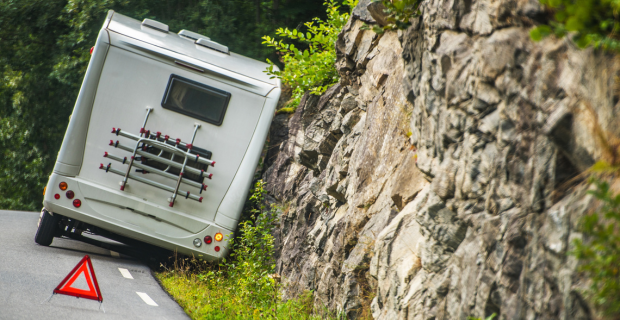Date Published: 2023/06/20
Read Time: mins
In the Event of an RV Accident or Other Claim

You can take all the right steps toward preventing RV accidents, vandalism, and even windstorm damage, but there is no guarantee that incidents won’t arise. Even with your best efforts, disaster can strike, leaving you reeling on what to do next. Thankfully, we can help by taking the guesswork out of the equation by providing the steps to follow in the event of an RV accident or other claim. Here’s what you need to know.
Get the Care You Need First
First and foremost, you need to ensure your safety and well-being before handling any other aspect of the RV accident or other incident. The same goes for your passengers. If you or anyone else is injured, for example, focus on getting medical care above all else. If the accident involves another vehicle, be sure to call the police, so you can later fill out an accident report for your claim.
Also take a moment to write down a step-by-step description of what happened in the accident or claim. Only after handling that should you move through the following steps.
Take Pictures if Safe to Do So
Explaining what happened to your insurance company or authorities, if needed, goes much smoother when you have pictures to back up your statements. The pictures can also help if your memory feels fuzzy in the coming weeks, which often happens after periods of high stress.
Before taking any photos, make sure the scene is secure and does not have any hazards to watch out for. If it is not, consider moving your RV if safe to do so, then take pictures of the damage when it is in a better spot.
Otherwise, start by taking overview photos of the entire scene by stepping back at least 5 metres from the RV. Then, slowly move in closer and closer, taking pictures that will help explain what happened and show the damage that occurred. Don’t forget to photograph the other vehicles in the event of an accident.
When you are done, copy the photos to a separate hard drive. Then, email them to yourself as a backup in case anything happens to your camera or phone.
Get the Info You Need to File a Claim
After taking pictures, you will need to gather information needed to file a claim with your insurance company. If you were involved in an accident with another party, do not admit fault or blame the other party for causing the collision.
Just ask to record, or take a picture of their:
- Driver license:
- Address
- License Number
- Liability Slip:
- Insurance company’s name
- Current policy number – effective date and expiry date
- Date their coverage expires
- Info about their vehicle
- License plate number
- Vehicle identification number
If at all possible, do not just write down the information above. Take a photo of their license, insurance paperwork, and license plate as well. Then, store it with the rest of your pictures.
After that, look around for street signs and write down the exact location of the incident. Plus, see if there are any witnesses nearby who are willing to share their account of the accident. If you see witnesses, get their contact info as well.
When your RV is vandalized, damaged in a storm, or involved in a single-car accident, you will not have as much information to write down. You should still note when and where the incident happened, detail the damage, and write down the date. Remember to still take lots of pictures as well.
Notify Your Insurance Company
Plan to notify your insurance company about what happened as soon as you can make the call. The representative will take down all the information you have and file the claim on your behalf. The rep will also likely ask for copies of all photos taken of the situation and resulting damage. You will likely need to email them over at your earliest convenience to help in processing the claim.
Throughout this process, you can ask questions and share your concerns to learn what to expect in the coming days and weeks. Once they receive the claim, the insurance company will review the provided info, talk with any other parties, and interview witnesses if needed. With those findings, they can pin down fault and figure out who is responsible for the damage, if anyone.
As long as you are not deemed fully at fault, your insurance company will either pay to have your RV fixed or issue a payout for its value at the time of loss. The severity of the damage greatly influences this decision, as does the vehicle’s current value. If the vehicle is considered too damaged to repair, it will be totalled and carry a salvaged title from then on. Either way, you will receive notice of their decision along with the next steps to follow.
Whether your RV was damaged in a storm or an accident derailed your fun road trip, our team at Orbit Insurance Services is always here to provide guidance and support whenever you need it. You can simply give us a call at 877-976-7248 for help taking the correct steps after an accident or other incident occurs. We can help you file an RV insurance claim, if necessary, and move through the steps with confidence you are on the right track.